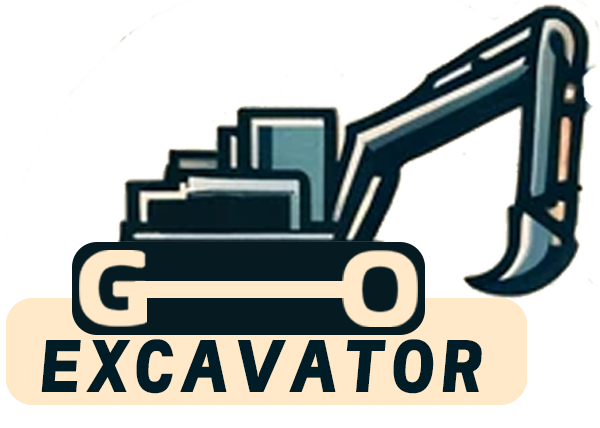
When it comes to construction and landscaping, choosing the right size of an excavator is crucial. Excavators come in various sizes, each designed for specific tasks. Whether you’re digging trenches, demolishing buildings, or clearing land, selecting the appropriate excavator size can significantly impact the efficiency and cost-effectiveness of your project.
1. Mini Excavators (1-5 Tons)
Mini excavators, also known as compact excavators, are the smallest class of excavators. Despite their size, they are incredibly versatile and are ideal for small to medium-sized projects.
Uses:
- Residential Construction: Mini excavators are perfect for tasks like digging foundations for small homes or garages, landscaping, and installing utility lines.
- Tight Spaces: Their compact size allows them to operate in confined spaces, such as between buildings or in narrow backyards.
- Light Demolition: They can handle light demolition tasks, such as removing small structures or breaking up concrete.
- Trenching: Mini excavators are often used for digging trenches for pipes or cables.
Advantages:
- Maneuverability: Easy to transport and maneuver, even in tight spaces.
- Low Ground Pressure: Causes minimal ground disturbance, making them ideal for landscaped areas.
- Cost-Effective: Lower operating costs compared to larger excavators.
2. Midi Excavators (6-10 Tons)
Midi excavators bridge the gap between mini and standard excavators. They offer more power and reach while still being compact enough for relatively confined spaces.
Uses:
- Urban Construction: Suitable for projects in urban areas where space is limited, but more power is required than what a mini excavator can provide.
- Roadwork: Ideal for small to medium road construction and maintenance projects.
- Medium-Sized Excavation: Can handle tasks like digging foundations for larger residential buildings or light commercial properties.
Advantages:
- Versatility: Combines the maneuverability of a mini excavator with the power of a larger machine.
- Fuel Efficiency: More fuel-efficient than larger excavators, reducing operating costs.

3. Standard Excavators (10-45 Tons)
Standard excavators are the most common type and are used for a wide range of applications. These machines offer a good balance between power, size, and cost, making them the go-to choice for many construction projects.
Uses:
- Large Construction Projects: Ideal for commercial and industrial construction, such as building highways, large-scale residential projects, and heavy infrastructure work.
- Earthmoving: Capable of moving large amounts of earth quickly, making them perfect for grading, digging large foundations, and other significant earthmoving tasks.
- Demolition: Equipped with attachments like breakers, standard excavators can efficiently demolish buildings and other structures.
- Utility Installation: Used for laying down large utility lines, such as water or sewer pipes.
Advantages:
- Power: Offers more digging power and reach, suitable for more demanding tasks.
- Attachment Versatility: Can be equipped with various attachments, such as grapples, augers, and shears, for specialized tasks.
- Durability: Built to withstand tough conditions and heavy use.
4. Large Excavators (45 Tons and Above)
Large excavators are the giants of the construction world. These machines are designed for the most demanding tasks and are used in large-scale industrial projects.
Uses:
- Mining: Essential for open-pit mining operations, large excavators are used to move massive amounts of material.
- Heavy-Duty Demolition: Suitable for demolishing large structures, such as multi-story buildings or industrial facilities.
- Infrastructure Projects: Used in the construction of bridges, tunnels, and dams, where significant earthmoving and material handling are required.
Advantages:
- Extreme Power: Can handle the most challenging tasks with ease.
- High Efficiency: Despite their size, large excavators are designed to be efficient, completing jobs faster and with fewer passes.
- Extended Reach: Capable of reaching greater depths and heights, ideal for deep excavation or tall structure demolition.
Choosing the right excavator size is essential for the success of any construction or landscaping project. Whether you need the compact efficiency of a mini excavator or the raw power of a large excavator, understanding the strengths and applications of each size class will help you make the best decision for your specific needs.
A Comprehensive Guide to Buying a Excavator Second Hand
Purchasing a second-hand excavator can be a cost-effective solution for your construction or landscaping needs. However, buying used machinery comes with its own set of challenges and considerations. This comprehensive guide will walk you through [...]
Comprehensive Guide to Hyundai Mini Excavators: Features and Prices
Mini excavators have become indispensable tools in the construction and landscaping industries. Hyundai Construction Equipment, a global leader in heavy machinery, offers a range of mini excavators known for their reliability, efficiency, and advanced features. [...]
How to Extend the Service Life of Excavator Parts
Excavators are indispensable machines in the construction and mining industries. They perform heavy-duty tasks that demand robust components and meticulous maintenance. Extending the service life of excavator parts not only reduces operational costs but enhances [...]
Kymron Excavators: Innovative, Sustainable Construction Machinery
In the dynamic world of construction and heavy machinery, Kymron has emerged as a game-changer. Specializing in advanced excavator technology, Kymron is redefining industry standards with its commitment to innovation, efficiency, and sustainability. Company Overview [...]
Bulldozer vs. Wheeled Excavator: Which Machine is Better for Moving Soil?
Moving soil is a fundamental task in construction, landscaping, and earthmoving projects. Choosing the right machinery for the job can significantly impact efficiency, cost, and project timelines. Two of the most commonly used machines for [...]
Why Are Small Excavators Favored? A Comprehensive Guide
In the world of construction and landscaping, efficiency and versatility are key. Among the myriad of machinery available, small excavators have risen in popularity. But what makes them so favored? Introduction to Small Excavators Small [...]




